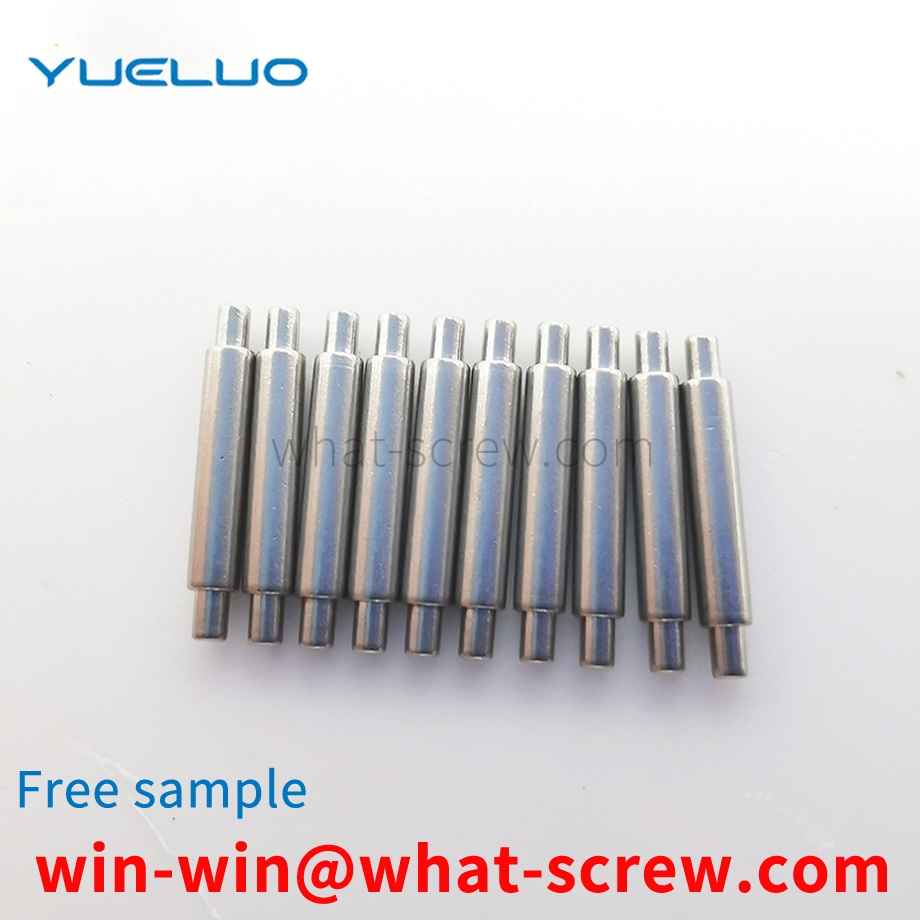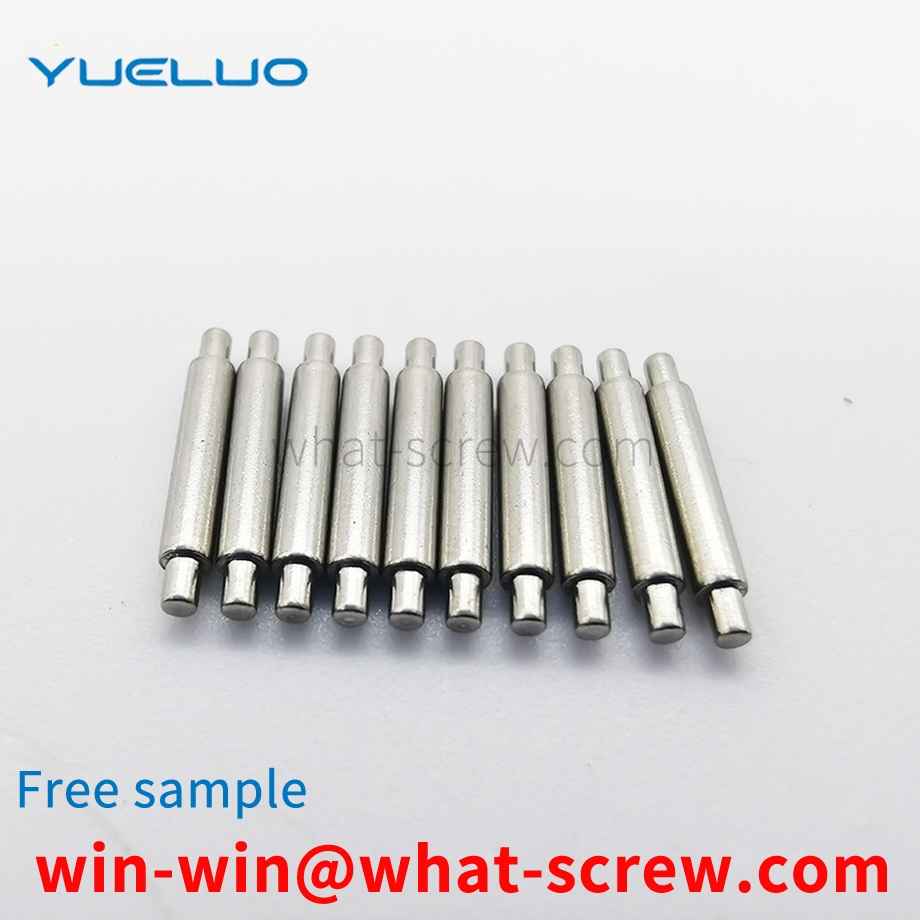Metric threads are measured in MM (millimeters) and have a cusp angle of 60 degrees. Both US and Imperial threads are measured in inches. The cusp angle of the American thread is also 60 degrees, while the cusp angle of the imperial thread is 55 degrees. Due to the different units of measurement, the representation methods of various threads are also different. For example, M16-2X60 represents a metric thread. His specific meaning is that the nominal diameter of the screw is 16MM, the pitch is 2MM, and the length is 60MM. Another example: 1/4—20X3/4 means the inch thread, what he specifically means is the nominal diameter of the screw It is 1/4 inch (one inch = 25.4MM), there are 20 teeth on one inch, and the length is 3/4 inch. In addition, if you want to express American screws, UNC and UNF are usually added to the back of the British screws to distinguish between American coarse teeth or American fine teeth. In the usual domestic sales business, the most common standards we encounter are GB (National Standard) and DIN (German Standard). In the production of Yaoda, the following standards are mainly encountered: GB30; GB5783; GB5782; GB52; GB6170; GB818; GB819; GB845; GB846; GB70; DIN912; DIN933; It has been replaced by GB5783 (new national standard). GB52 (old national standard) has been replaced by GB6170 (new national standard) in the standard book.
The development of a structure with simple production, reasonable structure and stable feeding is of great significance to the field of riveting automation. Technical realization elements: The purpose of this utility model is to overcome the deficiencies in the prior art, and to provide an automatic feeding device for pressure riveting nuts, which has a compact structure and a reasonable design, and can realize the automatic conveying of the pressure riveting nut on the pressure riveting die. Reduce the use of space, improve work efficiency and save labor costs. According to the technical scheme provided by the utility model: the automatic feeding device for riveting nuts, which is characterized in that: it includes an installation bracket, a connecting frame, a flap bracket, a material pushing cylinder, a material pushing block and a flap; the flap bracket is arranged on the installation Below the bracket and attached to the mounting bracket through the connecting bracket.
304L stainless steel cold pier line, 304 stainless steel cold pier line, 310 stainless steel cold pier line, 303 stainless steel cold pier line, 302 stainless steel cold pier line, 301 stainless steel cold pier line, 202 stainless steel cold pier line, 201 stainless steel cold pier line, 410 stainless steel Cold pier line, 420 stainless steel cold pier line, 430 stainless steel cold pier line, 316L stainless steel cold pier line: 316 stainless steel contains molybdenum and low carbon content, and its resistance to pitting corrosion in marine and chemical industry environments is much better than 304 Stainless steel! (316L low carbon, 316N nitrogen high strength and high strength, 316F stainless steel with high sulfur content, easy to cut stainless steel [1]. 304L stainless steel cold pier wire: as a low carbon 304 steel, in general, the corrosion resistance is the same as 304. Similar, but after welding or after stress relief, its resistance to grain boundary corrosion is excellent, and it can maintain good corrosion resistance without heat treatment. 304 stainless steel cold pier wire: has good corrosion resistance, heat resistance High temperature resistance, low temperature strength and mechanical properties, good thermal processability such as stamping and bending, no heat treatment hardening phenomenon. Uses: tableware, cabinets, boilers, auto parts, medical appliances, building materials, food industry (use temperature -196°C-700° C) 310 stainless steel cold pier wire: The main features are: high temperature resistance, generally used in boilers, automobile exhaust pipes. Other properties are average. 303 stainless steel cold pier wire: By adding a small amount of sulfur and phosphorus, it is easier to cut than 304, Other properties are similar to 304. 302 stainless steel cold pier wire: 302 stainless steel bar is widely used in auto parts, aviation, aerospace hardware tools, chemical industry. The details are as follows: handicrafts, bearings, slippery, medical equipment, electrical appliances, etc. Features: 302 stainless steel The ball is austenitic steel, which is close to 304, but the hardness of 302 is higher, HRC≤28, and has good rust and corrosion resistance. 301 stainless steel cold pier wire: good ductility, used for forming products. Machining makes it harden quickly. Good weldability. Wear resistance and fatigue strength are better than 304 stainless steel. 202 stainless steel cold pier wire: belongs to chromium-nickel-manganese austenitic stainless steel, and its performance is better than 201 stainless steel cold pier wire Shenzhen Global Stainless Steel Cold Pier Wire 201 Stainless Steel Cold Pier Wire: It belongs to chromium-nickel-manganese austenitic stainless steel, with low magnetic properties. 410 stainless steel cold pier wire: belongs to martensitic (high-strength chromium steel), with good wear resistance and corrosion resistance Poor performance. 420 stainless steel cold pier wire: cutting tool grade martensitic steel, similar to Brinell high chromium steel, the earliest stainless steel. It is also used for surgical knives and can be made very bright. 430 stainless steel cold pier wire: Ferritic stainless steel, decorative, e.g. for car accessories. Good formability, but poor temperature and corrosion resistance
The pretreatment process is a key process that determines the quality of nickel-phosphorus plating on high-strength bolts. The purpose of this process is to remove the passivation layer on the surface of the bolt and prevent the regeneration of the passivation film. The execution of this process directly determines the degree of bonding between the substrate and the coating. Most of the quality accidents in production are caused by poor pretreatment of bolts. Before plating, the oil, rust and oxide scale attached to the surface of the bolt must be carefully removed; the difference with electroplating is that it should be inspected more carefully, and plating is absolutely not allowed on unclean bolts. ① Inspection of bolts: Visual inspection of the surface quality of bolts requires that any burrs left by processing must be removed, and sharp edges and corners must be rounded. ② Manual degreasing; ensure that the surface of the substrate is free of oil stains. ③ Soak and remove oil; boil the bolts in alkaline water to remove the surface oil. ④ Pickling: In order to prevent the alkaline degreasing solution from contaminating the flash nickel plating tank, electro-activation treatment is carried out with pickling solution before flash nickel plating. ⑤ Electro-activation; electro-activation treatment with acid solution. ⑥ Flash nickel plating; flash nickel plating should be used for low alloy steel to increase the bonding strength between the coating and the substrate.
Since the HDS series is a disc spring that can be folded or overlapped. The combination of the butt joint can increase the deformation of the disc spring group, and the combination of the overlapping method can increase the spring force of the disc spring group. The ideal installation method is to flatten as much as possible. The closer it is to the flattened state, the faster the tension torque increases, and the proper bolt tension can be obtained without a torque wrench.
We have many years of experience in the production and sales of screws, nuts, flat washers, etc. The main products are: metal washers, cabinet nuts, nickel-plated nuts, stainless steel pins and other products, we can provide you with suitable fasteners for you solution.



















 Service Hotline
Service Hotline




